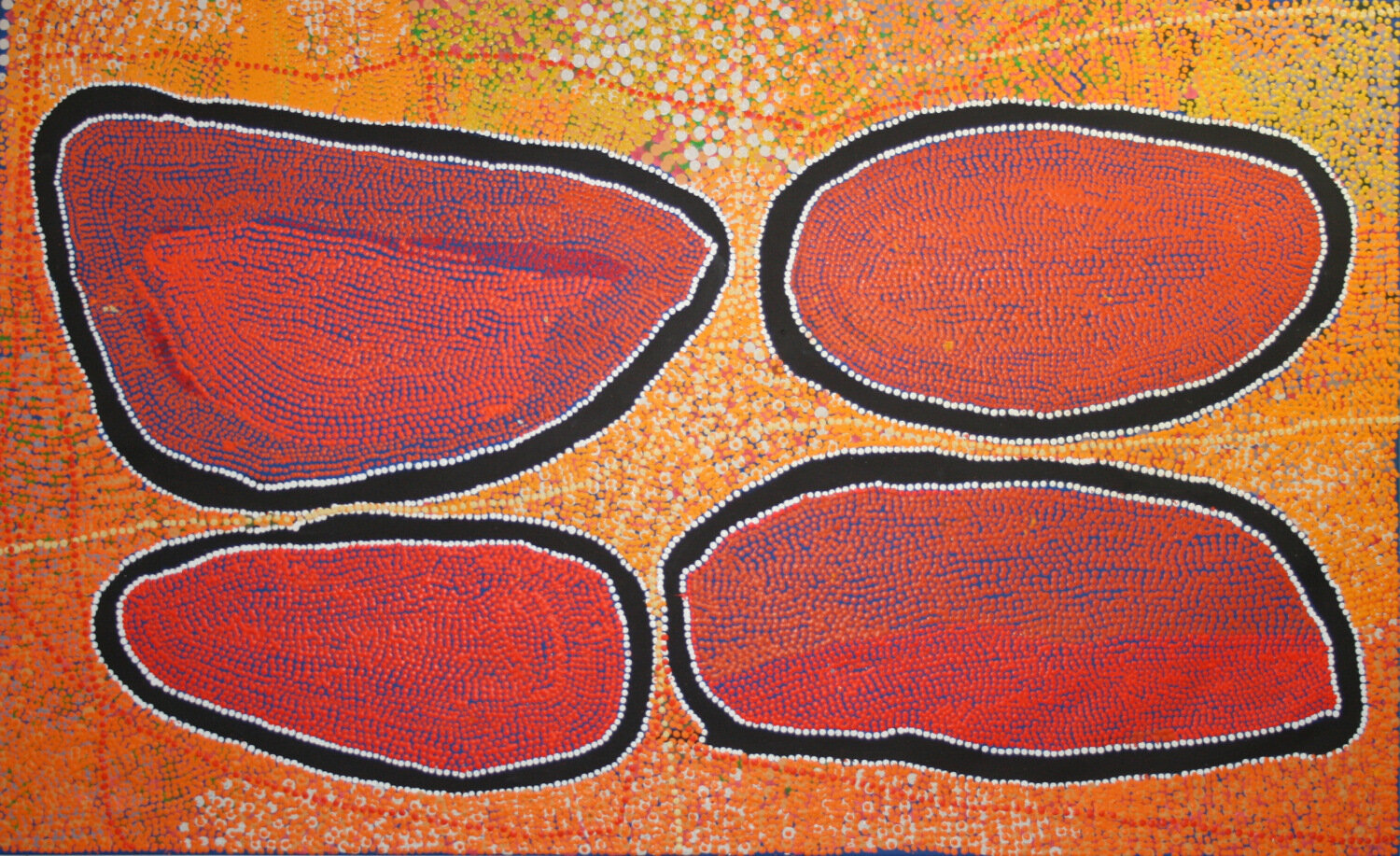Tarkunpa (2008) by Mitjili Napanangka Gibson, 198x122cm Cat 13569MN
Tarkunpa (2008) by Mitjili Napanangka Gibson, 198x122cm
When Mitjili walked around the Wilkinkarra area, one of the main places where she grew up was Parrailpit, a large desert wetland area with many eucalyptus trees.
This painting is about a site within the Wilkinkarra district between Wirnparrku and Kirrakurra submerged in the sandhills among golden spinifex, where Mitjili's father first came into contact with Europeans on horseback. This is also Mitjili's father's country, consisting of low outcrops of oxide sandstone and gibbered claypans. This is also where Mitjili first came into contact with European at this site, as well.
Mitjili Napanangka Gibson: A Legacy in Art and Film
Born in Winparrku in the Western Desert in 1932, Mitjili Napanangka Gibson (1932–2011) was a highly respected Indigenous Australian artist and actress. She began painting after watching her niece, Dorothy Napangardi, who was already an acclaimed artist. Mitjili’s distinct artistic style quickly gained recognition, with her works featured at the 2007 Melbourne and Sydney Art Fairs. In 2009, she was shortlisted for the prestigious Telstra National Aboriginal and Torres Strait Islander Art Award, further cementing her status as an important contemporary Indigenous artist.
Beyond her success in visual art, Mitjili was also celebrated for her contributions to Australian cinema. She played Delilah’s Nana in Warwick Thornton’s award-winning film Samson and Delilah (2009), a performance that earned her a nomination for Best Actress in a Supporting Role at the 2009 AFI Awards. She had previously starred in Thornton’s short film Nana, where she played the title role.
A Lasting Cultural and Artistic Influence
Mitjili Napanangka Gibson’s paintings remain highly sought after, celebrated for their bold compositions, intricate storytelling, and deep spiritual connection to Country. Through her art and film performances, she left a powerful legacy, ensuring that the sacred Dreaming stories of the Western Desert continue to be shared and honoured for generations to come.

